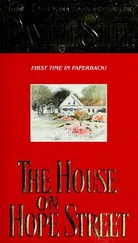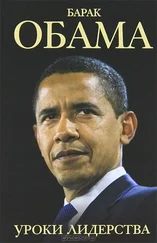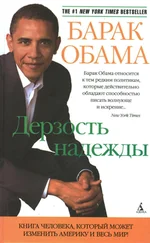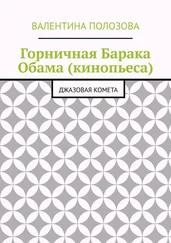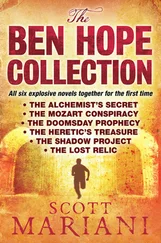Барак Обама - The Audacity of Hope
Здесь есть возможность читать онлайн «Барак Обама - The Audacity of Hope» весь текст электронной книги совершенно бесплатно (целиком полную версию без сокращений). В некоторых случаях можно слушать аудио, скачать через торрент в формате fb2 и присутствует краткое содержание. Жанр: Политика, на английском языке. Описание произведения, (предисловие) а так же отзывы посетителей доступны на портале библиотеки ЛибКат.
- Название:The Audacity of Hope
- Автор:
- Жанр:
- Год:неизвестен
- ISBN:нет данных
- Рейтинг книги:5 / 5. Голосов: 1
-
Избранное:Добавить в избранное
- Отзывы:
-
Ваша оценка:
- 100
- 1
- 2
- 3
- 4
- 5
The Audacity of Hope: краткое содержание, описание и аннотация
Предлагаем к чтению аннотацию, описание, краткое содержание или предисловие (зависит от того, что написал сам автор книги «The Audacity of Hope»). Если вы не нашли необходимую информацию о книге — напишите в комментариях, мы постараемся отыскать её.
The Audacity of Hope — читать онлайн бесплатно полную книгу (весь текст) целиком
Ниже представлен текст книги, разбитый по страницам. Система сохранения места последней прочитанной страницы, позволяет с удобством читать онлайн бесплатно книгу «The Audacity of Hope», без необходимости каждый раз заново искать на чём Вы остановились. Поставьте закладку, и сможете в любой момент перейти на страницу, на которой закончили чтение.
Интервал:
Закладка:
We have a right and duty to protect our borders. We can insist to those already here that with citizenship come obligations — to a common language, common loyalties, a common purpose, a common destiny. But ultimately the danger to our way of life is not that we will be overrun by those who do not look like us or do not yet speak our language. The danger will come if we fail to recognize the humanity of Cristina and her family — if we withhold from them the rights and opportunities that we take for granted, and tolerate the hypocrisy of a servant class in our midst; or more broadly, if we stand idly by as America continues to become increasingly unequal, an inequality that tracks racial lines and therefore feeds racial strife and which, as the country becomes more black and brown, neither our democracy nor our economy can long withstand.
That’s not the future I want for Cristina, I said to myself as I watched her and her family wave good-bye. That’s not the future I want for my daughters. Their America will be more dizzying in its diversity, its culture more polyglot. My daughters will learn Spanish and be the better for it. Cristina will learn about Rosa Parks and understand that the life of a black seamstress speaks to her own. The issues my girls and Cristina confront may lack the stark moral clarity of a segregated bus, but in one form or another their generation will surely be tested — just as Mrs. Parks was tested and the Freedom Riders were tested, just as we are all tested — by those voices that would divide us and have us turn on each other.
And when they are tested in that way, I hope Cristina and my daughters will have all read about the history of this country and will recognize they have been given something precious.
America is big enough to accommodate all their dreams.
Chapter Eight
The World Beyond Our Borders
I NDONESIA IS A nation of islands — more than seventeen thousand in all, spread along the equator between the Indian and Pacific Oceans, between Australia and the South China Sea. Most Indonesians are of Malay stock and live on the larger islands of Java, Sumatra, Kalimantan, Sulawesi, and Bali. On the far eastern islands like Ambon and the Indonesian portion of New Guinea the people are, in varying degrees, of Melanesian ancestry. Indonesia’s climate is tropical, and its rain forests were once teeming with exotic species like the orangutan and the Sumatran tiger. Today, those rain forests are rapidly dwindling, victim to logging, mining, and the cultivation of rice, tea, coffee, and palm oil. Deprived of their natural habitat, orangutans are now an endangered species; no more than a few hundred Sumatran tigers remain in the wild.
With more than 240 million people, Indonesia’s population ranks fourth in the world, behind China, India, and the United States. More than seven hundred ethnic groups reside within the country’s borders, and more than 742 languages are spoken there. Almost 90 percent of Indonesia’s population practice Islam, making it the world’s largest Muslim nation. Indonesia is OPEC’s only Asian member, although as a consequence of aging infrastructure, depleted reserves, and high domestic consumption it is now a net importer of crude oil. The national language is Bahasa Indonesia. The capital is Jakarta. The currency is the rupiah.
Most Americans can’t locate Indonesia on a map.
This fact is puzzling to Indonesians, since for the past sixty years the fate of their nation has been directly tied to U.S. foreign policy. Ruled by a succession of sultanates and often-splintering kingdoms for most of its history, the archipelago became a Dutch colony — the Dutch East Indies — in the 1600s, a status that would last for more than three centuries. But in the lead-up to World War II, the Dutch East Indies’ ample oil reserves became a prime target of Japanese expansion; having thrown its lot in with the Axis powers and facing a U.S.-imposed oil embargo, Japan needed fuel for its military and industry. After the attack on Pearl Harbor, Japan moved swiftly to take over the Dutch colony, an occupation that would last for the duration of the war.
With the Japanese surrender in 1945, a budding Indonesian nationalist movement declared the country’s independence. The Dutch had other ideas, and attempted to reclaim their former territory. Four bloody years of war ensued. Eventually the Dutch bowed to mounting international pressure (the U.S. government, already concerned with the spread of communism under the banner of anticolonialism, threatened the Netherlands with a cutoff of Marshall Plan funds) and recognized Indonesia’s sovereignty. The principal leader of the independence movement, a charismatic, flamboyant figure named Sukarno, became Indonesia’s first president.
Sukarno proved to be a major disappointment to Washington. Along with Nehru of India and Nasser of Egypt, he helped found the nonaligned movement, an effort by nations newly liberated from colonial rule to navigate an independent path between the West and the Soviet bloc. Indonesia’s Communist Party, although never formally in power, grew in size and influence. Sukarno himself ramped up the anti-Western rhetoric, nationalizing key industries, rejecting U.S. aid, and strengthening ties with the Soviets and China. With U.S. forces knee-deep in Vietnam and the domino theory still a central tenet of U.S. foreign policy, the CIA began providing covert support to various insurgencies inside Indonesia, and cultivated close links with Indonesia’s military officers, many of whom had been trained in the United States. In 1965, under the leadership of General Suharto, the military moved against Sukarno, and under emergency powers began a massive purge of communists and their sympathizers. According to estimates, between 500,000 and one million people were slaughtered during the purge, with 750,000 others imprisoned or forced into exile.
It was two years after the purge began, in 1967, the same year that Suharto assumed the presidency, that my mother and I arrived in Jakarta, a consequence of her remarriage to an Indonesian student whom she’d met at the University of Hawaii. I was six at the time, my mother twenty-four. In later years my mother would insist that had she known what had transpired in the preceding months, we never would have made the trip. But she didn’t know — the full story of the coup and the purge was slow to appear in American newspapers. Indonesians didn’t talk about it either. My stepfather, who had seen his student visa revoked while still in Hawaii and had been conscripted into the Indonesian army a few months before our arrival, refused to talk politics with my mother, advising her that some things were best forgotten.
And in fact, forgetting the past was easy to do in Indonesia. Jakarta was still a sleepy backwater in those days, with few buildings over four or five stories high, cycle rickshaws outnumbering cars, the city center and wealthier sections of town — with their colonial elegance and lush, well-tended lawns — quickly giving way to clots of small villages with unpaved roads and open sewers, dusty markets, and shanties of mud and brick and plywood and corrugated iron that tumbled down gentle banks to murky rivers where families bathed and washed laundry like pilgrims in the Ganges.
Our family was not well off in those early years; the Indonesian army didn’t pay its lieutenants much. We lived in a modest house on the outskirts of town, without air-conditioning, refrigeration, or flush toilets. We had no car — my stepfather rode a motorcycle, while my mother took the local jitney service every morning to the U.S. embassy, where she worked as an English teacher. Without the money to go to the international school that most expatriate children attended, I went to local Indonesian schools and ran the streets with the children of farmers, servants, tailors, and clerks.
Читать дальшеИнтервал:
Закладка:
Похожие книги на «The Audacity of Hope»
Представляем Вашему вниманию похожие книги на «The Audacity of Hope» списком для выбора. Мы отобрали схожую по названию и смыслу литературу в надежде предоставить читателям больше вариантов отыскать новые, интересные, ещё непрочитанные произведения.
Обсуждение, отзывы о книге «The Audacity of Hope» и просто собственные мнения читателей. Оставьте ваши комментарии, напишите, что Вы думаете о произведении, его смысле или главных героях. Укажите что конкретно понравилось, а что нет, и почему Вы так считаете.

![Барак Обама - Дерзость надежды. Мысли об возрождении американской мечты [The Audacity of Hope]](/books/26630/barak-obama-derzost-nadezhdy-mysli-ob-vozrozhdenii-thumb.webp)
